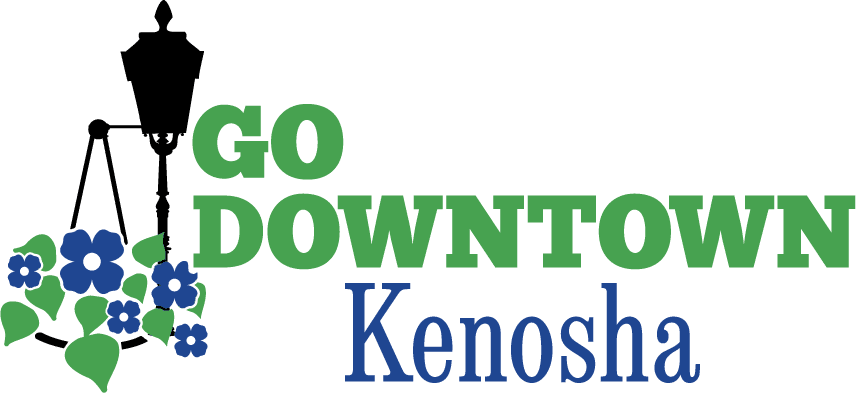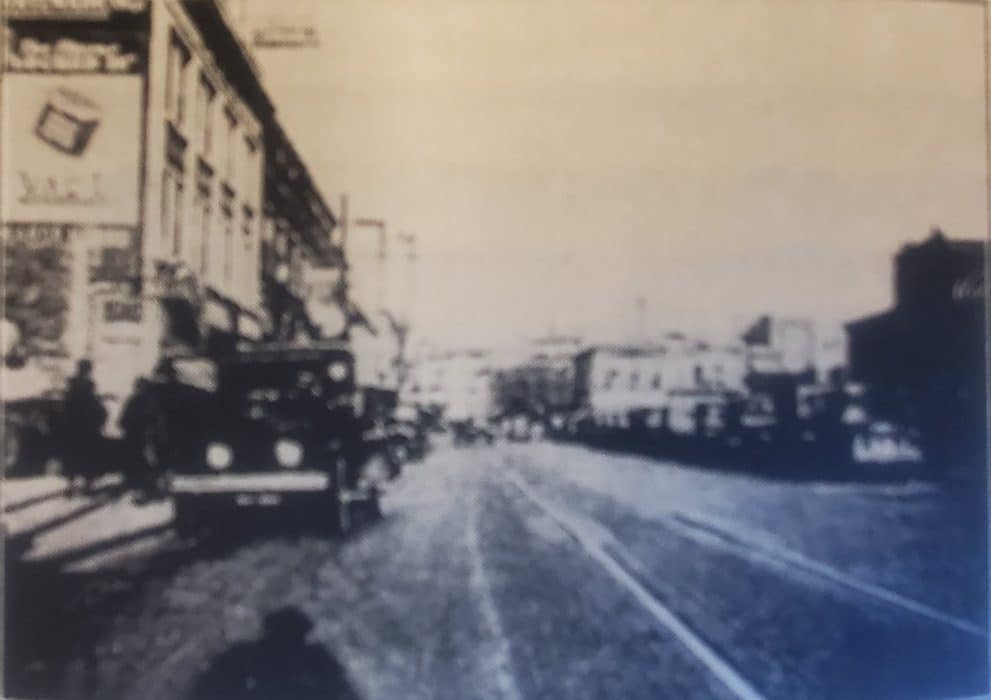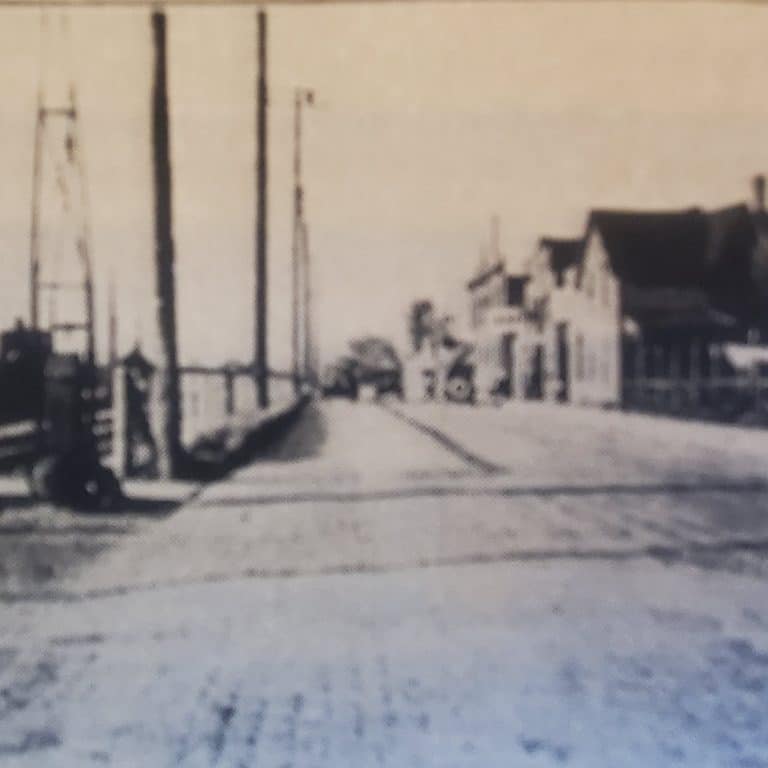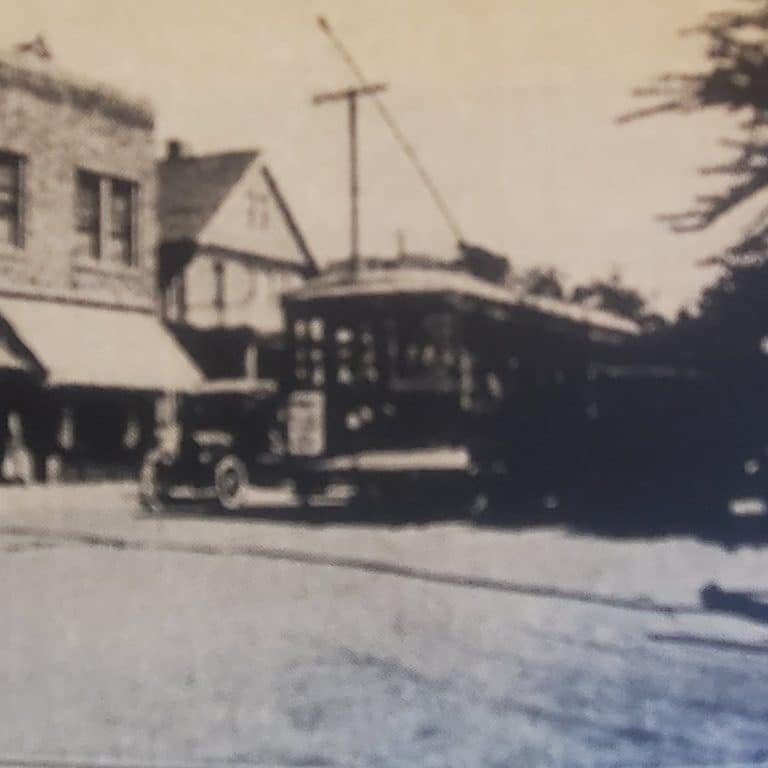When the Streets Had Different Names
Imagine strolling the streets of Downtown Kenosha in the early 1900s. Things were very different then – including the street names! The city was growing quickly, and horses-and-buggies were becoming a thing of the past. People were moving from the farms into the city and bringing their automobiles with them. Kenosha’s streets were confusing, not easily navigable, congested, and dirty. The unpaved streets that were once suitable for the horse-and-buggy were becoming a problem with fast-moving automobiles. Streets became muddy and messy in the rain and dusty in dry weather. Something needed to change to accommodate this transformation – even the names of the streets!
The way the streets in Kenosha were originally planned was in a traditional way but ended up being a hodge-podge of confusion. Kenosha wasn’t the only city like this though. According to The Kenosha City Plan of 1925, a philosophy was born known as the “City Beautiful Movement” (Forgianni, page iii). This fast growth of people moving into urban areas was happening in cities all over the world causing issues with people’s quality of life. Kenosha wasn’t always the place to Shop, Dine, Play, Work and Live, but that all began to change.
“As early as 1905, in a speech presented by Harriet Head Yule for the Women’s Club of Kenosha, there was a call to make Kenosha a better place, to make it the ‘Town Beautiful’” (as cited in Forgianni, 1999) and from there support grew and eventually in 1925 The Kenosha City Plan was created. The City Plan Engineer was Harland Bartholomew and his plan “…would go on to be recognized as the model for both the Chicago region and the rest of the nation” (Forgianni, page v). Further, the Kenosha City Plan was a continuous effort “…to provide properly for the health, welfare and happiness of its people”, as cited by the President of the Council at the time. Along with many other improvements, streets became the orderly, grid system that we all know and love today.
But wait! How did the street names change??
Good question. It is important to note that the original streets were either named for where they go, like Sheridan Road, while others were named for what they were known for, named after someone or just had a random name, according to Jon Martens at the Kenosha History Center. Here’s a breakdown:
Main Street, known today as 6th Avenue, was the main street in Downtown Kenosha, much like today. Nowadays you’ll find floral shops like A Summer’s Garden Florist, specialty shops like Canna Vita, S J Crystals Menswear Inc, Lulu Birds and Shoe Soldier Headquarters, and restaurants like Yee’s Oriental Inn, Wine Knot Bar & Bistro, Cut Stone, and of course, Tavern on 6th…although I suppose calling it Tavern on Main wouldn’t be so bad! Fun Fact: S J Crystals Menswear Inc has been around for over 100 years!
Church Street was named as such because, you guessed it, there were lots of churches on this road back then. Nowadays you know Church Street as 7th Avenue. While strolling along today you will run into Alpaca Art, Peacetree Originals, Actor’s Craft, Merry Yacht Inn, and of course, Serendipity on 7th and Circa on Seventh. They could have been called Serendipity on Church and Circa on Church! Fun Fact: Merry Yacht Inn is an old fire station that was built in 1889!
Mona Street is now known as 57th Street. Present day, Shel’s Bridal & Talent, Kaiser’s Pizza & Pub and Authentique can be visited as well as Le Esther’s Lamp Shop, which has been open since 1938!
Tanners Court houses the businesses of 58th Street now. Dawn’s Style, Frank’s Diner, Upper East and the Gold Standard Social Club are there now. Even 58 Below (Tanners Below doesn’t have the same ring to it). Fun Fact: Frank’s Diner has been there since 1926 after six horses pulled it into town after being shipped here on a railroad flat car!
Middle Street, now referred to as 50th Street, has Downtown favorites like Cypress Tree, Bird of Paradox Studios, The Lettering Machine, and The Port of Kenosha Beverage House.
Market Street was named as such because 56th Street between 6th and 8th used to be a Market Square! Now on 56th Street you can dine at the Apis Hotel and Restaurant, Ono Sushi, grab a drink at Swede’s and catch a show at the Rhode Center for the Arts that has been there for 95 years! Slip 56 Bar & Galley is here too…sounds funny saying Slip Market Bar, doesn’t it?
Lemon Street is now 46th Street but the shop around the corner pays homage to it. Lemon Street Gallery, whose building was erected in 1919, shares its business name with the original 46th Street name. You can also find Nature’s Gallery on 46th Street.
What was once known as North Chicago Street, is now 8th Avenue. Here you’ll find The Stella Hotel and Ballroom, Cheers Bar, Scoops Ice Cream & Candy and of course, the 8th Avenue Tap…or should we call it North Chicago Tap instead?
Whether you are walking through Downtown Kenosha in an east and west direction down a street or in a north and south direction on an avenue, try to remember what those streets and avenues used to be called something else. Step back in time and imagine a horse-and-buggy trotting by instead of a car. Notice the “…decorative street and lighting system…” as noted in the Kenosha City Directory of 1927. Downtown Kenosha continues to be “…a city of congenial and happy people” (as cited in the Kenosha City Directory, page 1)where we can Shop, Dine, Play, Work and Live. Happy Strolling!
Special thank you to the Archival Staff at the Kenosha History Center for their assistance!
Bartholomew, H. & Associates (1925), & Forgianni, R. (1999). The Kenosha City Plan 1925 (75th Anniversary Edition (pp. iii-xii). Kenosha County Historical Society.
Kenosha City Directory. 1927. Wright Directory Co. Publishers, Kenosha History Center, Kenosha, WI.




